What is the curing of concrete?
Curing of concrete can be defined as the process of maintaining an optimum moisture content and desirable temperature for a certain period of time after concrete placement, so that the hydration process may continue until the concrete can develop sufficient strength.
Why curing of concrete is important?
Concrete derives its strength through the hydration process.
The chemical reaction that takes place between cement and water is called as Hydration of cement.
The hydration process is not an instantaneous one, it occurs rapidly at starting stage and slowly decreases over an indefinite period of time.
So, the quality and the quantity of products that are formed as a result of the hydration process can affect the concrete strength and durability characteristics at a later stage.
Hence, the curing process develops a favorable environment for concrete during the early stages.
Is it necessary to cure the concrete?
Theoretically, the water added to the concrete during mixing itself is necessary for the complete hydration of cement particles, if there isn’t any loss of water due to evaporation or adsorption.
It is only possible for the concrete that is made and contained in a sealed container.
In the field and actual work, it is a different story.
Since the concrete is open to the atmosphere, the water used in the concrete evaporates and the water available in the concrete will not be sufficient for effective hydration to take place, particularly in the top layer of the concrete.
So, YES! Curing is necessary to replenish the loss of water on account of absorption and evaporation so that the hydration process can continue without any interruption.
Concrete curing time
The average curing time of concrete depends on various following factors:
- Types of cement
- Mixture proportions
- Environmental conditions
- Future weather exposure
- Strength of the concrete
- Dimension of the concrete member etc…
i) Based on the American Concrete Institute (ACI)
According to ACI 301, generally, concrete should be cured for a minimum of 7 days after placement.
In the case of high early-strength concrete, curing time can be reduced to a minimum of 3 days after placement.
But as stated above, the curing time can also vary depending upon the type of cement used. In that case, ACI Committee 308 recommends the following minimum curing periods,
- ASTM C 150 Type I cement – seven days
- ASTM C 150 Type II cement – ten days
- ASTM C 150 Type III cement – three days
- ASTM C 150 Type IV or V cement – 14 days
ii) Based on the Indian standards (IS)
According to IS 456: 2000, concrete should be cured for a minimum of
- 7 days in case of Ordinary Portland Cement (OPC)
- 10 days in the case of blended cement like Portland Pozzolana Cement (PPC). However, if blended cement (or) any mineral admixture is used it is recommended to extend the curing period to 14 days.
- 7 days in case of super sulfated cement
- 10 days if the concrete is exposed to hot weather conditions
Follow us on Instagram to keep yourself updated!
Methods of curing concrete
The curing methods of concrete may be divided broadly into the following four categories,
- Water curing
- Membrane curing
- Steam curing
- Application of curing compounds
1) Water curing
It is the best method of curing when compared to all other methods. In this method, the water is applied to the concrete surface for the above-mentioned durations.
Water curing can be done in the following ways,
- Immersion – This method is adopted for precast members where the members are completely immersed in the curing tank for the minimum curing period.
- Ponding – This method is adopted for horizontal members like slabs, pavement, or floors. The surface of the members is covered under the water by making a small pond on the surface.
- Spraying – Vertical retaining walls or plastered surfaces or concrete columns etc. are cured by spraying water on the surface.
- Wet covering – In some cases, the vertical surface is covered by wet gunny bags, hessian cloth, jute matting, straw, etc., for keeping the concrete surface wet.

2) Membrane curing
Sometimes, concrete work is carried out in places where there is a severe water shortage. In those places, water curing is almost impossible and not economical.
In such places, membrane curing can be adopted.
It has been stated above that the water used for mixing is usually more than enough for the hydration process in case of no evaporation.
By adopting this concept, here the surface of the concrete is covered with an impervious membrane to prevent the evaporation of water.
Polyethylene or polyester film, waterproof paper, rubber compounds, etc.. can be used as a covering membrane.
It will be beneficial if the membrane is covered after applying a short spell of water for curing.
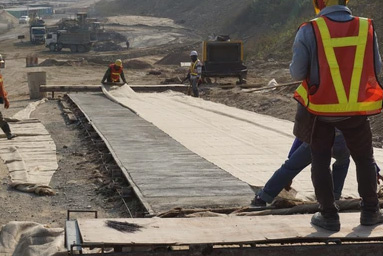
3) Steam curing
It is found that when the concrete is subjected to higher temperatures it accelerates the hydration process and results in faster development of strength.
However, the concrete cannot be subjected to dry heat because the presence of moisture is also an essential requisite for the hydration process.
In that case, steam curing can be adopted so that both temperature and wetness can be achieved simultaneously.
Oftentimes, steam curing can be adopted only for precast elements because the application of steam on the cast in situ concrete can be difficult.
A steam-curving cycle consists of:
- an initial delay before steaming,
- a period for increasing the temperature,
- a period for retaining the temperature,
- a period for decreasing the temperature.
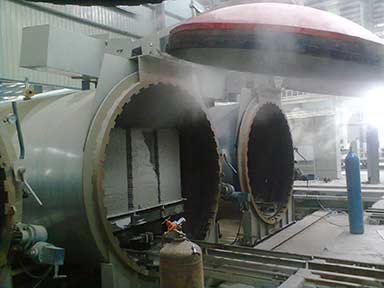
4) Application of curing compounds
We can also be able to cure the concrete by applying some curing compounds on the surface to keep the concrete wet.
Calcium chloride is used as a surface-curing compound in concrete. It is based on the fact that calcium chloride being a salt, shows a greater affinity for moisture.
It not only absorbs moisture from the atmosphere but also retains it at the surface. This moisture held at the concrete surface prevents the mixing water from evaporation and thereby keeps the concrete wet for a long time to promote hydration.
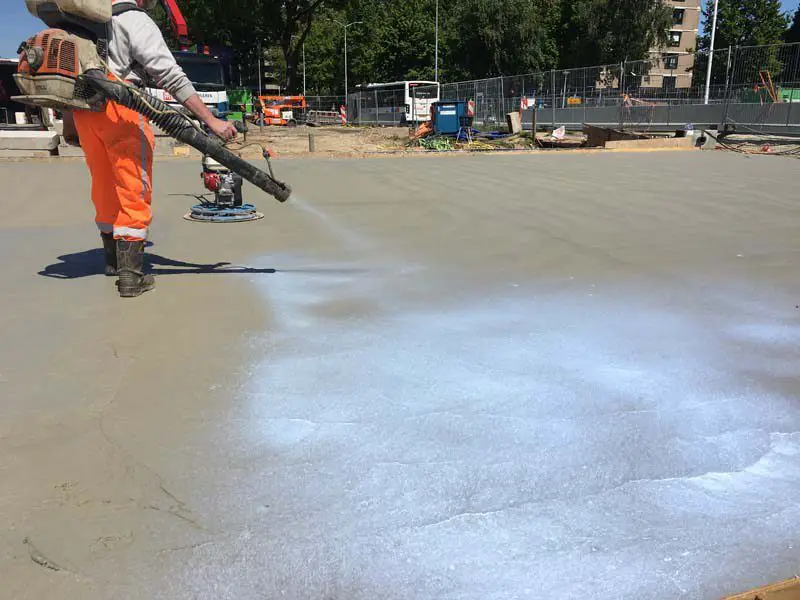
There are also several miscellaneous methods available to cure the concrete such as electrical curing, curing by Infrared radiation, etc. However, these methods did not help as much in the field when compared to the above methods.
Advantages of curing concrete
There are several advantages when the concrete poured is properly cured. Some of them are mentioned below,
- It enhances the durability and strength of the concrete.
- It reduces the heat of hydration which results in fewer thermal cracks.
- It prevents shrinkage cracks on the surface of the concrete.
- It will cause a reduction in permeability.
- It helps concrete to develop a good gel structure which will make the concrete withstand higher stresses at a later stage.
What happens If you don’t cure concrete enough?
The quality and quantity of the gel formed during the early stages of concrete depend upon the hydration process.
The efficiency of the hydration reaction depends upon the available moisture content. The moisture can be applied to the concrete through the curing process.
So, If curing is neglected in the early period of hydration, the quality of concrete will become poor and concrete will experience a sort of irreparable loss at the later stage.
Efficient curing in the early period of hydration can be compared to good and wholesome feeding given to a newborn baby.
Also without curing, the surface of the concrete dried so fast and naturally become weak which results in an innumerable number of cracks developing at the surface at the later stages.
The quick surface drying of concrete also results in the movement of moisture from the interior to the surface. This will create more capillary cavities which will eventually lead to durability issues in the concrete.
Hope you understand everything you need to know about the curing of concrete. If you find this article helpful (or) If you have any queries, let us know in the comment section.
Read More:
A Detailed Guide to Brick wall Cracks & How to repair them
Deshuttering Period | Formwork Removal Time
25 Necessary Guidelines For Constructing A Good Quality Brick Masonry
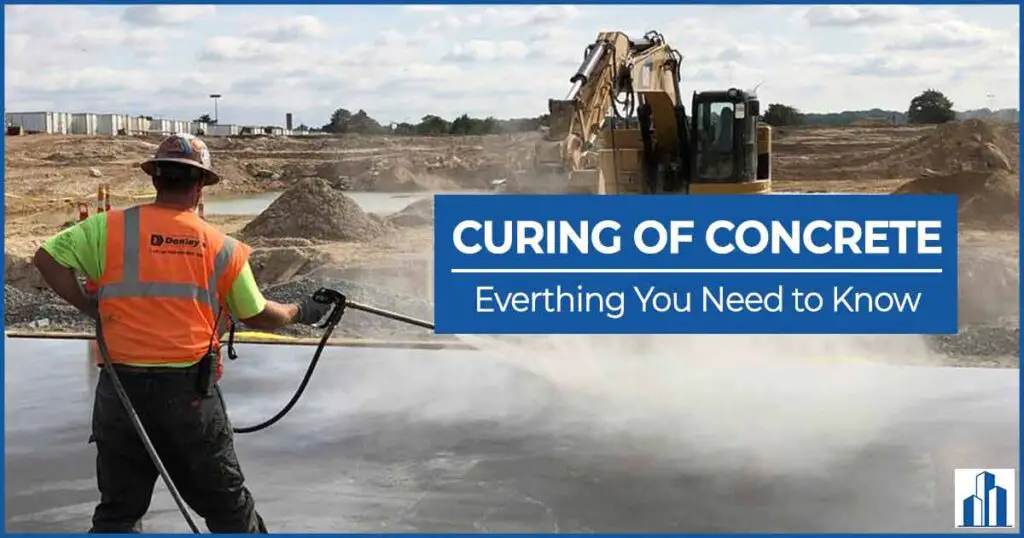
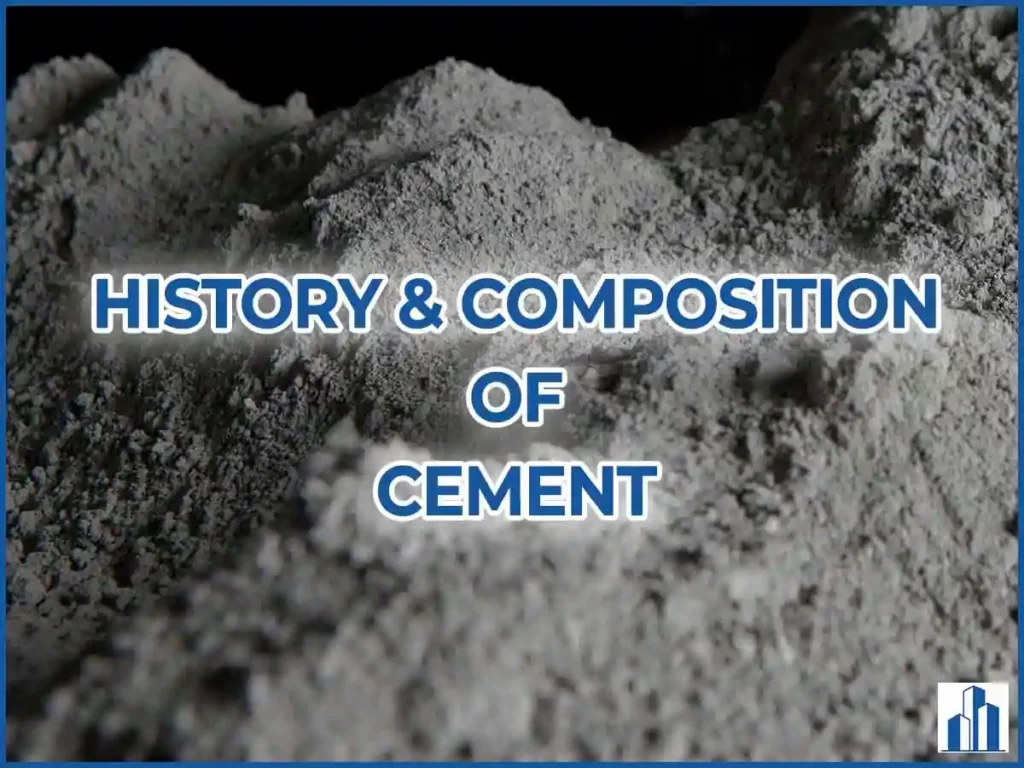
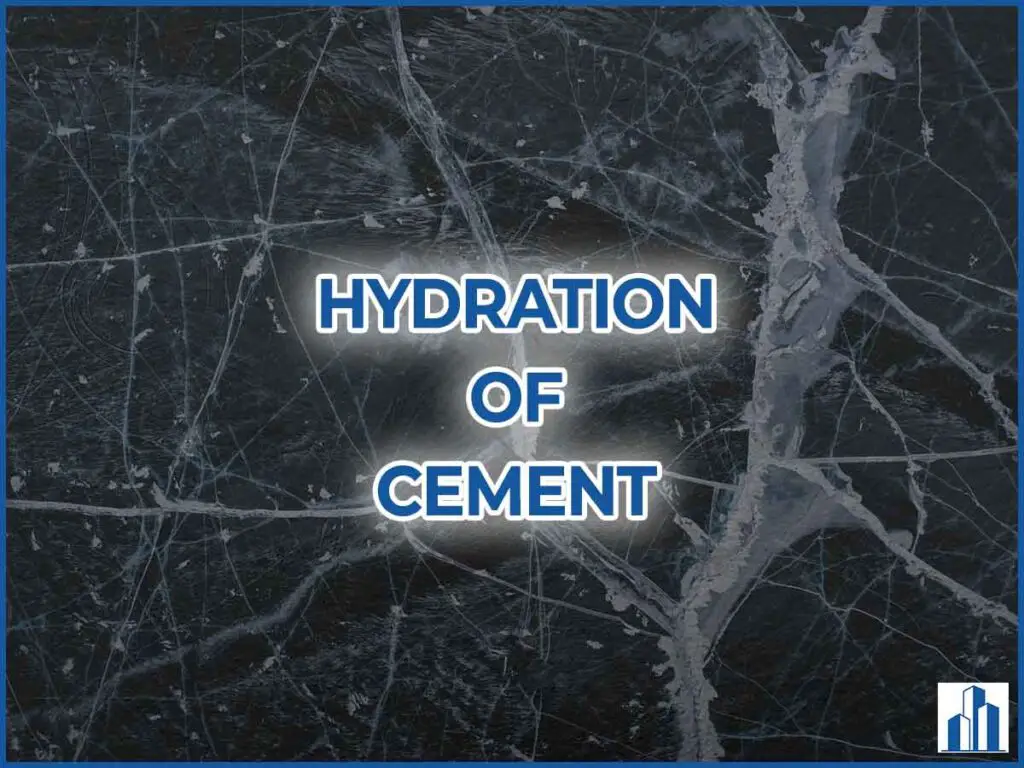

I’m impressed, I have to admit. Genuinely rarely will i encounter a blog that’s both educative and entertaining, and let me tell you, you’ve hit the nail to the head. Your notion is outstanding; the problem is something which not enough persons are speaking intelligently about. I’m happy i came across this in my search for some thing about it.